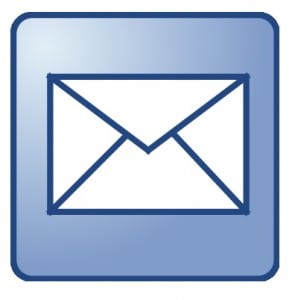Technologies are not introduced into organizations at random; they are introduced with specific expectations in mind about their role and future use. Although individuals in corporations may experiment with new technologies, their global deployment across a corporation is usually planned (not just in terms of how the adoption will happen, but more significantly, why it should be adopted). The reasons to adopt a technology embody a set of expectations that have been shaped by the past.
 E-mail: Its Introduction to Organizations
E-mail: Its Introduction to Organizations
As often as not, in practice, actual adoption and usage patterns tend to deviate from anticipated use. E-mail was no exception. E-mail was introduced into organizations to support organizational communication. However, the organizational communication that it was intended to support was largely different from that which emerged.
One clue about the expectations that corporations might have had surrounding the introduction of e-mail comes from the form of e-mail messages themselves; a body, generally under a page or two, preceded by a formulaic set of headings – “From:”, “To:”, “Subject:”, etc. This echoes the traditional office memo, and indeed, when e-mail was introduced, it was in anticipation of a move from paper-based to electronic memos.
Yates and Orlikowski use the concept of “genre” to describe the patterns of social action inscribed into different forms of communication. For them, genres are not simply document forms, but are “social institutions that are produced, reproduced, or modified when human agents draw on genre rules to engage in organizational communication.”. They further develop the concept of “genre repertoire” to draw attention to the diversity and evolution of organization practices enabled and represented by different communicative forms. By relating the evolution of communication to organizational capabilities and routines, they demonstrate how genres of communication reflect organizational choices and opportunities.
In this context, the genre conventions of the business letter emerged from those of the personal letter, and then evolved first into a form of internal communication, and subsequently into the business memo as we know it. Memos and business communication provided the context within which electronic mail was deployed. Since memos generally moved along the lines of an organizational chart, communication between two points in the organization flowed through the organizational hierarchy. Similarly, e-mail messages were also expected to move along organizational lines. The analogy between memos and e-mail applied not only to the form of the document, but to expectations of the uses to which it would be put, the kinds of messages that would be sent, and the people who would be sending and receiving them.
New Opportunities with E-Mail
In practice, however, e-mail use did not match these expectations. As Sproull and Kiesler document, although messages were expected to follow organizational lines, in fact it suddenly afforded to people the opportunity to make lateral connections across the organization. Not only could people more easily find and reach each other through an organization, without going through management, but e-mail also opened up the opportunity to send relatively undirected messages – broadcasts, announcements and inquiries to largely unknown sets of people. “Broadcast electronic mail made it relatively easy to regularize communication to a group of people, ensuring that no one was inadvertently left out”. e-mail communication was freed from the structures imposed upon it by the organization. Accordingly, the memo form was only loosely appropriate for these communications; while the memo format suited communication between people at different points in the organization or at different status levels, the form of interaction that emerged through e-mail was more open and flexible. It was, in a word, more informal.
Informal Communication with E-mail
Echoing John Seely Brown’s comment, it was noted that “the language in many electronic mail messages is more informal and colloquial than is generally used in memos, and spelling and grammatical errors considered inappropriate in memos tend to be tolerated in this medium”. This informal language that existed often resulted in “employees using the system for personal purposes; the correspondence included love letters, disagreements between married partners, plans for homosexual relations, and a football betting pool”. Feder reports an information systems manager commenting that e-mail was “more informal than a written memo and less intrusive than a phone call. You feel freer to contact people who have information, no matter where they are on the corporate ladder, and you’re more likely to get a timely response.” Over time, organizations came to realize that e-mail could “enable workers to bypass rigid bureaucratic procedures” and “reduce the barriers to communication between people at different levels of hierarchy in an organization”.
E-mail communication was informal, then, but it was informal with respect to business memos, and informal in the context of the institutional arrangements that surrounded its introduction. It was informal in that it allowed people to communicate outside of the intended organizational structure, and to develop, to an extent, their own norms and conventions for peer communication.
